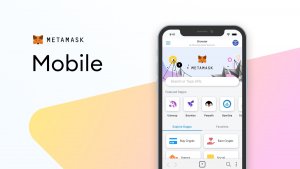The rise of Crypto NDFs as industry enters digital asset space
The novel instrument can be used by any participant that is not authorized by regulators to handle spot crypto or looks to limit counterparty risk or avoid any other issue with inefficiencies over spot trading and custody.

Ever since Bitcoin was created by “Satoshi Nakamoto” one of the hardest questions is how can the trading industry manage the adoption of digital assets in their transition from the physical context to the financial.
For years, cryptocurrency has remained a largely retail product in the face of impediments to a wider use such as the unknowns of the regulatory landscape facing the physical market to the challenges of adopting and fitting new technology into the existing tech stack and operational processes.
Crypto NDFs easier to manage due to OTC nature
We’re in 2022 and the institutional space seems to have found out how to finally play a larger role in these markets and drive product innovation. The answer is non-deliverable forwards (NDFs).
Derivative products were naturally the first solution to provide exposure to the crypto market, but some work better than others, industry participants have found. Futures and exchange-traded products (ETPs), for example, have their own unique challenges that prevent wider adoption in the short term.
Crypto NDFs, on the other hand, seem to be much easier to manage due to their over-the-counter (OTC) nature. There are no margin issues with exchanges and risk management is well embedded into the current setup as the industry expresses deep familiarity with the product.
This means that Crypto NDFs can be easily adopted by large Liquidity Providers (LPs) to make markets across the industry.
Moreover, 24/7 trading is one of the identity traces of crypto trading, and NDFs not only provide full access to round-the-clock trading but also have the ability for contracts to expire on bespoke days.
At the moment, participants tend to trade crypto on CLOBs (central limit order books) and exchanges, but the nascent nature of the underlying and the volatility of cryptocurrencies could trigger a move to multilateral venues or an aggregated CLOB before bilateral trading takes off.
Bank LPs may find Crypto NDFs attractive because the rate is created by a reputable third party and is easily observable, but the fix is not tradable, which leaves residual risk in the book.
As nonbank LPs can quickly move into the vanilla NDF space once the product is established, bank LPs are looking beyond vanilla, short-dated NDFs, aiming to use those primarily as building blocks to offer options and longer-dated contracts to differentiate their product offering from nonbanks.
Compliant and efficient exposure for brokers, LPs, asset managers, and banks
The NDF is one of crypto’s watershed moments as it marks the opening of a new derivative class, in which increasing trading volume is now likely to be seen.
The Crypto NDF acts like any fiat currency NDF transaction but with a crypto non-convertible currency instead of a fiat one.
The novel instrument can be used by any participant that is not authorized by regulators to handle spot crypto or looks to limit counterparty risk or avoid any other issue with inefficiencies over spot trading and custody.
Crypto NDFs come as an attractive proposition for banks who wish to offer exposure to clients while remaining compliant and for asset managers who look to access capital-efficient exposure to cryptos.
Margin brokers and liquidity providers can also use Crypto NDFs for efficient crypto exposure with proper risk management and reduced cost.









